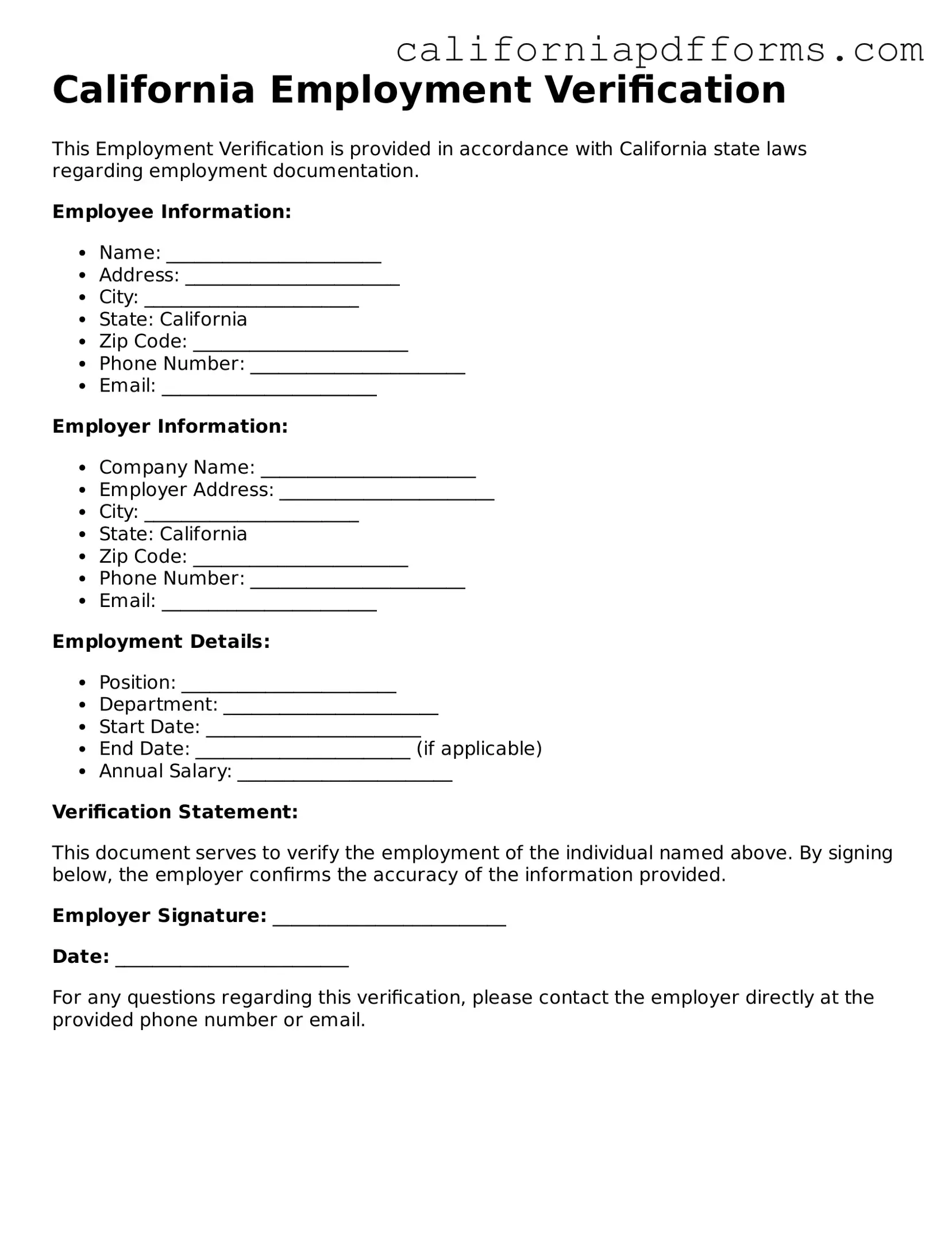The California Employment Verification form is a document used by employers to confirm an employee's job status, including their position, salary, and duration of employment. This form is often required for various purposes, such as loan applications, rental agreements, or background checks.
Typically, the form needs to be completed by employers or human resources personnel. Employees may request this verification for personal reasons, such as applying for a mortgage or leasing a property. It is important for employers to ensure the information provided is accurate and up-to-date.
Employers can create their own Employment Verification form or use templates available online. It is essential to ensure that the form complies with California state laws. Employees can request this form directly from their HR department or management.
The Employment Verification form generally includes the following details:
-
Employee's name
-
Employee's job title
-
Dates of employment
-
Salary or hourly wage
-
Employment status (full-time, part-time, etc.)
-
Employer's contact information
No, the Employment Verification form is not legally required. However, many employers use it as a standard practice to provide proof of employment when requested by employees or third parties.
How long does it take to process an Employment Verification request?
The processing time can vary depending on the employer's policies. Generally, it may take anywhere from a few days to a week. Employees should allow adequate time for their requests to be fulfilled, especially if they have urgent deadlines.
Can I refuse to provide my Employment Verification?
Employees can choose not to provide the Employment Verification form. However, this may hinder their ability to secure loans, leases, or other agreements that require proof of employment. It is advisable to weigh the potential consequences before making a decision.
If you notice any inaccuracies on the Employment Verification form, contact your employer immediately. They should be willing to correct any errors and issue a revised form. Ensuring accuracy is crucial for your financial and professional interests.
Yes, privacy is a significant concern. Employers should limit the information shared to what is necessary for verification. Employees should also be cautious about where they submit this form and who has access to it, as sensitive information is often included.
If an employer refuses to complete the Employment Verification form, discuss the reasons with them. It may be a misunderstanding or a policy issue. If the refusal persists, consider seeking advice from a legal professional or your HR department to understand your options.
